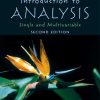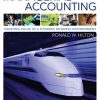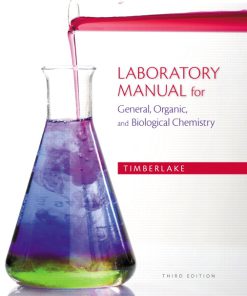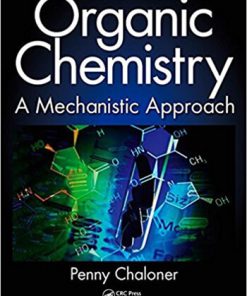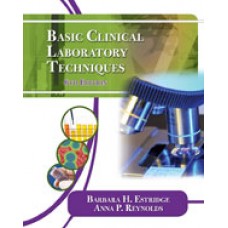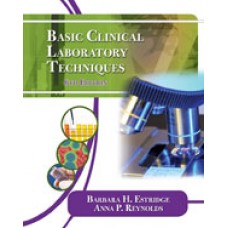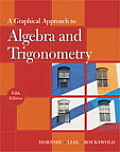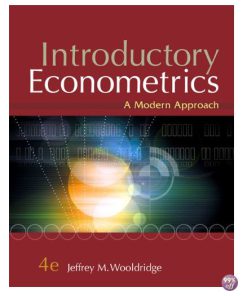Solution Manual for A Microscale Approach to Organic Laboratory Techniques, 5th Edition
$35.00 Original price was: $35.00.$26.50Current price is: $26.50.
Solution Manual for A Microscale Approach to Organic Laboratory Techniques, 5th Edition
Instant download Solution Manual for A Microscale Approach to Organic Laboratory Techniques, 5th Edition pdf docx epub after payment.
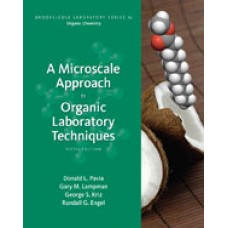
Product details:
- ISBN-10 : 1133106528
- ISBN-13 : 978-1133106524
- Author: Donald L. Pavia; George S. Kriz; Gary M. Lampman; Randall G. Engel
PART I: INTRODUCTION TO BASIC LABORATORY TECHNIQUES. Experiment
1: Introduction to Microscale Laboratory. Experiment
2: Solubility. Experiment
3: Crystallization. Experiment
4: Extraction. Experiment
5: A Separation and Purification Scheme. Experiment
6: Chromatography. Experiment
7: Simple and Fractional Distillation. Experiment
8: Infrared Spectroscopy and Boiling Point Determination. ESSAY: Aspirin. Experiment
9: Acetylsalicylic Acid. ESSAY: Analgesics. Experiment
10: Isolation of the Active Ingredient in an Analgesic Drug. Experiment
11: Acetaminophen. ESSAY: Identification of Drugs. Experiment
12: TLC Analysis of Analgesic Drugs. ESSAY: Caffeine. Experiment
13: Isolation of Caffeine. ESSAY: Esters — Flavors and Fragrances. Experiment
14: Isopentyl Acetate (Banana Oil). ESSAY: Terpenes and Phenylpropanoids. Experiment
15: Essential Oils: Extraction of Oil of Cloves by Steam Distillation. Essay: Stereochemical Theory of Odor. Experiment
16: Spearmint and Caraway Oil: (+)- and (-)- Carvones. Essay: The Chemistry of Vision. Experiment
17: Isolation of Chlorophyll and Carotenoid Pigments from Spinach. Essay: Ethanol and Fermentation Chemistry. Experiment 18 Ethanol from Sucrose. PART II: INTRODUCTION TO MOLECULAR MODELING. ESSAY: Molecular Modeling and Molecular Mechanics. Experiment
19: An Introduction to Molecular Modeling. ESSAY: Computational Chemistry — Ab initio and Semiempirical Methods. Experiment
20: Computational Chemistry. PART III: PROPERTIES AND REACTIONS OF ORGANIC COMPOUNDS. Experiment
21: Reactivities of Some Alkyl Halides. Experiment
22: Nucleophilic Substitution Reactions: Competing Nucleophiles. Experiment
23: Synthesis of n-Butyl Bromide and t-Pentyl Chloride. Experiment
24: 4-Methylcyclohexene. ESSAY: Fats and Oils. Experiment
25: Methyl Stearate from Methyl Oleate. ESSAY: Petroleum and Fossil Fuels. Experiment
26: Gas Chromatographic Analysis of Gasolines. ESSAY: Biofuels. Experiment
27: Biodiesel. ESSAY: Green Chemistry. Experiment
28: Chiral Reduction of Ethyl Acetoacetate; Optical Purity Determination Using a Chiral Shift Reagent. Experiment
29: Nitration of Aromatic Compounds Using a Recyclable Catalyst. Experiment
30: Resolution of (?????Phenylethylamine and Determination of Optical Purity. Experiment
31: An Oxidation-Reduction Scheme: Borneol, Camphor, Isoborneol. Experiment
32: Multi-Step Reaction Sequences: The Conversion of Benzaldehyde to Benzilic Acid. Experiment
33: Triphenylmethanol and Benzoic Acid. Experiment
34: Sonogashira Coupling of Iodosubstituted Aromatic Compounds with Alkynes Using a Palladium Catalyst. Experiment
35: Grubbs-Catalyzed Metathesis of Eugenol with 1,4-Butanediol to Prepare a Natural Product. Experiment
36: Aqueous-based Organozinc Reactions. Experiment
37: The Aldol Condensation Reaction: Preparation of Benzalacetophenones (Chalcones). Experiment
38: Preparation of an ???-Unsaturated Ketone via Michael and Aldol Condensation Reactions. Experiment
39: The Wittig Reaction: Preparation of 1,4-Diphenyl-1,3-butadiene. Experiment
40: Relative Reactivities of Several Aromatic Compounds. Experiment
41: Nitration of Methyl Benzoate. ESSAY: Local Anesthetics. Experiment
42: Benzocaine. Experiment
43: Methyl Salicylate (Oil of Wintergreen). ESSAY: Pheromones: Insect Attractants and Repellents. Experiment
44: N,N-Diethyl-m-toluamide: The Insect Repellent “OFF.” ESSAY: Sulfa Drugs. Experiment
45: Sulfa Drugs: Preparation of Sulfanilamide. Essay: Polymers and Plastics. Experiment
46: Preparation and Properties of Polymers: Polyester, Nylon, and Polystyrene. Essay: Diels-Alder Reactions and Insecticides. Experiment
47: The Diels-Alder Reaction of Cyclopentadiene with Maleic Anhydride. Experiment
48: Diels-Alder Reaction with Anthracene-9-methanol. Experiment
49: Photoreduction of Benzophenone and Rearrangement of Benzpinacol to Benzopinacolone. ESSAY:Fireflies and Photochemistry. Experiment
50: Luminol. ESSAY: The Chemistry of Sweeteners. Experiment
51: Analysis of a Diet Soft Drink by HPLC. PART IV: IDENTIFICATION OF ORGANIC SUBSTANCES. Experiment
52: Identification of Unknowns. PART V: PROJECT-BASED EXPERIMENTS. Experiment
53: Preparation of a C-4 or C-5 Acetate Ester. Experiment
54: Isolation of Essential Oils from Allspice, Cloves, Cumin, Caraway, Cinnamon, Fennel, or Star Anise. Experiment
55: Competing Nucleophiles in SN1 and SN2 Reactions: Investigations using 2-Pentanol and 3-Pentanol. Experiment
56: Friedel-Crafts Acylation. Experiment
57: The Analysis of Antihistamine Drugs by Gas Chromatography-Mass Spectrometry. Experiment
58: The Use of Organozinc Reagents in Synthesis: An Exercise in Synthesis and Structure Proof by Spectroscopy. Experiment
59: Synthesis of Naproxen by Palladium Catalysis. Experiment
60: The Aldehyde Enigma. Experiment
61: Synthesis of Substituted Chalcones: A Guided-Inquiry Experience. Experiment
62: Green Epoxidation of Chalcones. Experiment
63: Cyclopropanation of Chalcones. Experiment
64: Michael and Aldol Condensation Reactions. Experiment
65: Esterification Reactions of Vanillin: The Use of NMR to Solve a Structure Proof Problem. Experiment
66: An Oxidation Puzzle. PART VI: THE TECHNIQUES. Technique
1: Laboratory Safety. Technique
2: The Laboratory Notebook, Calculations, and Laboratory Records. Technique
3: Laboratory Glassware: Care and Cleaning. Technique
4: How to Find Data for Compounds: Handbooks and Catalogues. Technique
5: Measurement of Volume and Weight. Technique
6: Heating and Cooling Methods. Technique
7: Reaction Methods. Technique
8: Filtration. Technique
9: Physical Constants of Solids: The Melting Point. Technique
10: Solubility. Technique
11: Crystallization: Purification of Solids. Technique
12: Extractions, Separations, and Drying Agents. Technique
13: Physical Constants of Liquids: The Boiling Point and Density. Technique
14: Simple Distillation. Technique
15: Fractional Distillation, Azeotropes. Technique
16: Vacuum Distillation, Manometers. Technique
17: Sublimation. Technique
18: Steam Distillation. Technique
19: Column Chromatography. Technique
20: Thin-Layer Chromatography. Technique
21: High-Performance Liquid Chromatography (HPLC). Technique
22: Gas Chromatography. Technique
23: Polarimetry. Technique
24: Refractometry. Technique
25: Infrared Spectroscopy. Technique
26: Nuclear Magnetic Resonance Spectroscopy. Technique
27: Carbon-13 Nuclear Magnetic Resonance Spectroscopy Technique
28: Mass Spectrometry. Technique
29: Guide to the Chemical Literature. APPENDICES: Appendix
1: Tables of Unknowns and Derivatives. Appendix
2: Procedures for Preparing Derivatives. Appendix
3: Index of Spectra.
People also search:
A Microscale Approach to Organic Laboratory Techniques, 5th Edition
A Microscale Approach to Organic Laboratory Techniques, 5th Edition pdf
A Microscale Approach to Organic Laboratory Techniques
introduction to organic laboratory techniques a microscale approach
laboratory methods of soil analysis
|
aboratory standard methods
|
You may also like…
Solution Manual
Solution Manual
Solution Manual
Solution Manual
Solution Manual for Introductory Econometrics A Modern Approach 5th Edition by Wooldridge
Solution Manual


